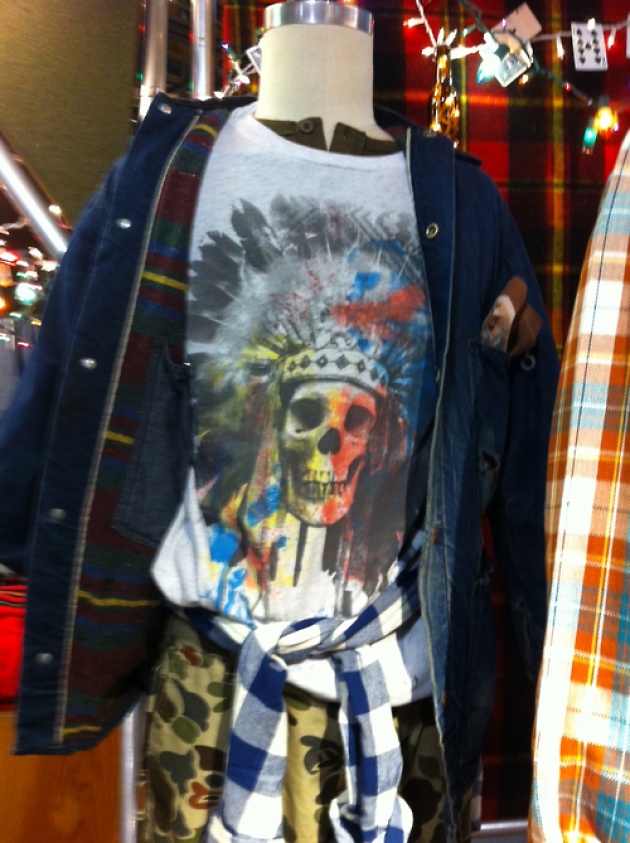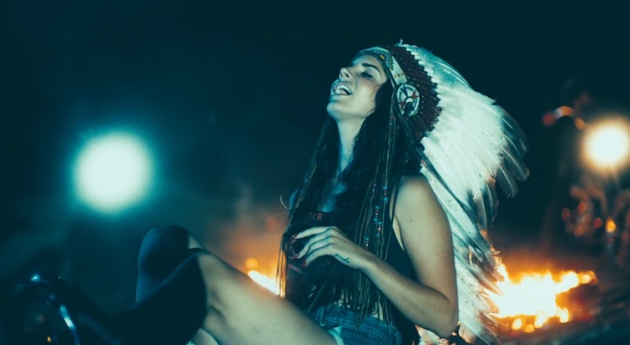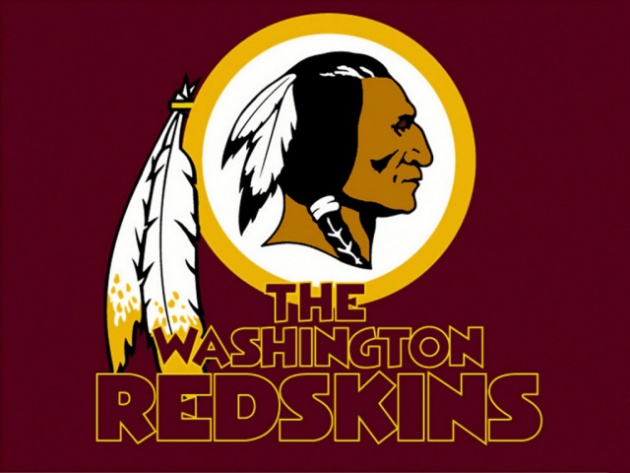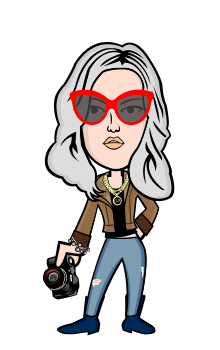For a long time in the fashion industry, feather headdresses stirred up quite the controversy regarding cultural appropriation faux pas. Native American headdresses have been flaunted in all realms of fashion from runway shows to stylized music videos.
Let’s begin with the major fashion companies who have been under fire for Native American appropriation in recent years. In 2012, Urban Outfitters issued a line that they called “Navajo” and included photos of girls holding flasks while dressed in Native American tribal inspired print and accessories. The controversy exploded as the Navajo Nation commissioned a letter exclaiming their deep objections to the fake tribal prints and navajo theme.

The Navajo Nation currently holds 12 trademarks on the word "Navajo," which includes clothing. While Urban Outfitters didn’t explicitly showcase Native American headdresses in their campaign, they had shirts and other items that displayed illustrations of a Native American headdress. A popular graphic on a shirt was of a skull sporting a headdress. Urban Outfitters decided to withdraw the word “navajo” from their line’s term, but never issued an apology.

In the winter of 2012, Victoria’s Secret caused quite the stir - possibly the biggest in recent years. The beautiful VS model, Karlie Kloss graced the Victoria’s Secret Fashion Show runway in a massive feather headdress and a Pocahontas inspired lingerie set accented by turquoise jewelry and leopard print. When images of the elaborate outfit were released, Victoria Secret took an extreme blow to the face with steamy hate mail and social media platforms and blogs putting them under fire. The famous lingerie line immediately took action and pulled the look from all campaigns and cut it out of the television showcase.

Music videos have also received an overwhelming amount of angry hot air and disapproval. No Doubt’s “Looking Hot” music video was immediately removed amid the controversy for the “cowboys and indians” theme. No Doubt had the video released for barely a day, and took it upon themselves to quickly release an apology statement mentioning that as a multi-racial band they believed in showing cultural respect.

Lana Del Rey’s mesmerizing and cinematic music video for her single “Ride” features her in a huge feather headdress in the desert. The headdress was not paired with a Native costume but was used as an enchanting accessory, possibly in aid of glorifying the beauty of freedom - a theme of the video. Though the video underwent much disapproval from critics and fans alike for the misuse of Native apparel, it was not pulled.

The concern and controversy is that all this appropriation may be contributing to perpetuating the stereotypes of Native Americans. But I would like to propose a question - a question of perspective: could one argue that the incorporation of feather headdresses in fashion be a celebration of an aspect of the culture? Where and how do we know if the intentions were for appreciation or appropriation? There seems to be a great amount of protest when fashion companies use Native American iconography- protest that assumes the companies’ judgement stems solely from ignorance and exploitation. I am not defending the fashion industry by saying we need to give them the benefit of the doubt, but would like to take a brief moment to propose insight into the oblivion of the offender. In the blissful ignorance of these designers who made and accessorized with a headdress, their elaborate pieces were an expression of vibrant art. To them, it was not any different from designing an intricate oriental kimono or a Russian hat (Usanka), both of which have been featured in past televised Victoria’s Secret fashion shows. Perhaps the sacred Native American headdress paired with lingerie accented by animal print is not paying tribute to the bloodshed that the natives suffered. But neither are the “Indian” Halloween costumes or the Washington Redskins. So is all the hot air and protest overreacting or isn’t it? Is this supposed racism comparable to if someone designed a Nazi costume for the VS fashion show? I agree that appropriation of Native imagery is most certainly an insult to Native people. But where do we draw the lines and limits? Or are there no exceptions?

Washington football team, the Redskins, have recently released new statements defending their team’s name. Attorney Lanny Davis exclaimed that in the Annenberg Institute poll, with a national sample of Native Americans, 9 out of 10 Native Americans said they did not mind the team name, “Washington Redskins”. However, research proves that this poll was taken in 2004. That’s nine years ago - nearly a decade. Perhaps now is the prime time for the hot air around this controversy and all controversies regarding the Native American racism and appropriation.
But with so much of it occurring in all areas of pop culture, where do we begin with educating those partaking in appropriation that this is wrong? Which monster do we choose to fight first? Halloween costumes, music videos, or fashion events? Or are people who are up in arms just overreacting? What do you think?
WATCH WANDERLUST FROM DIRECTOR NAOMI CHRISTIE



